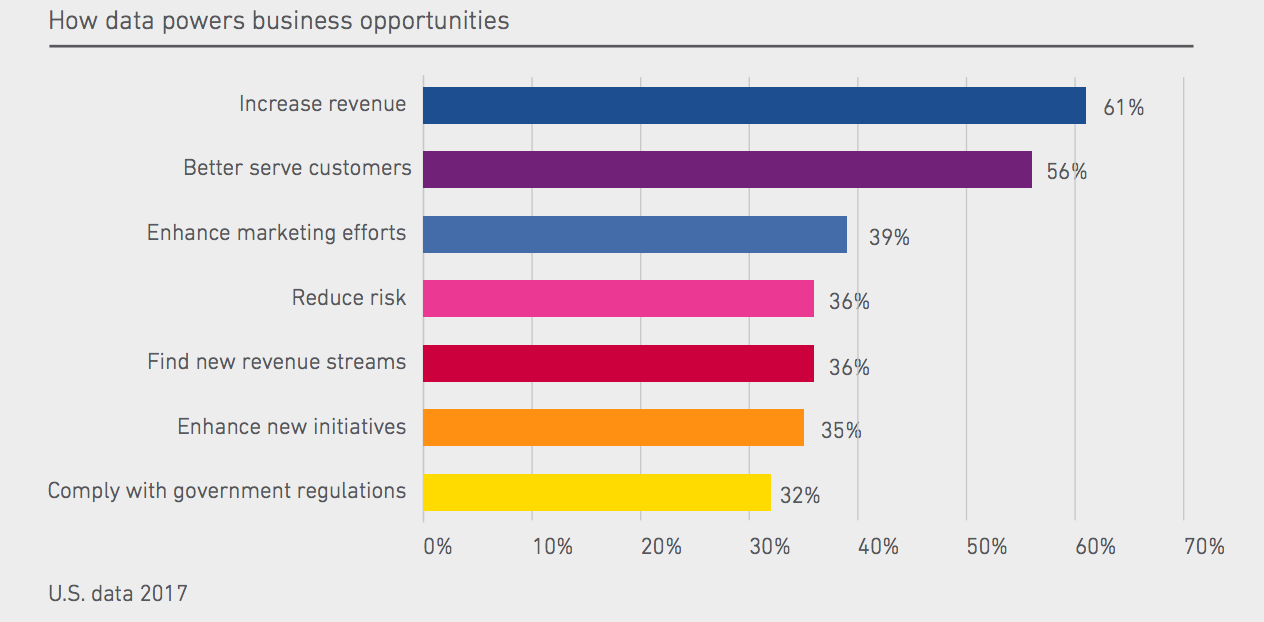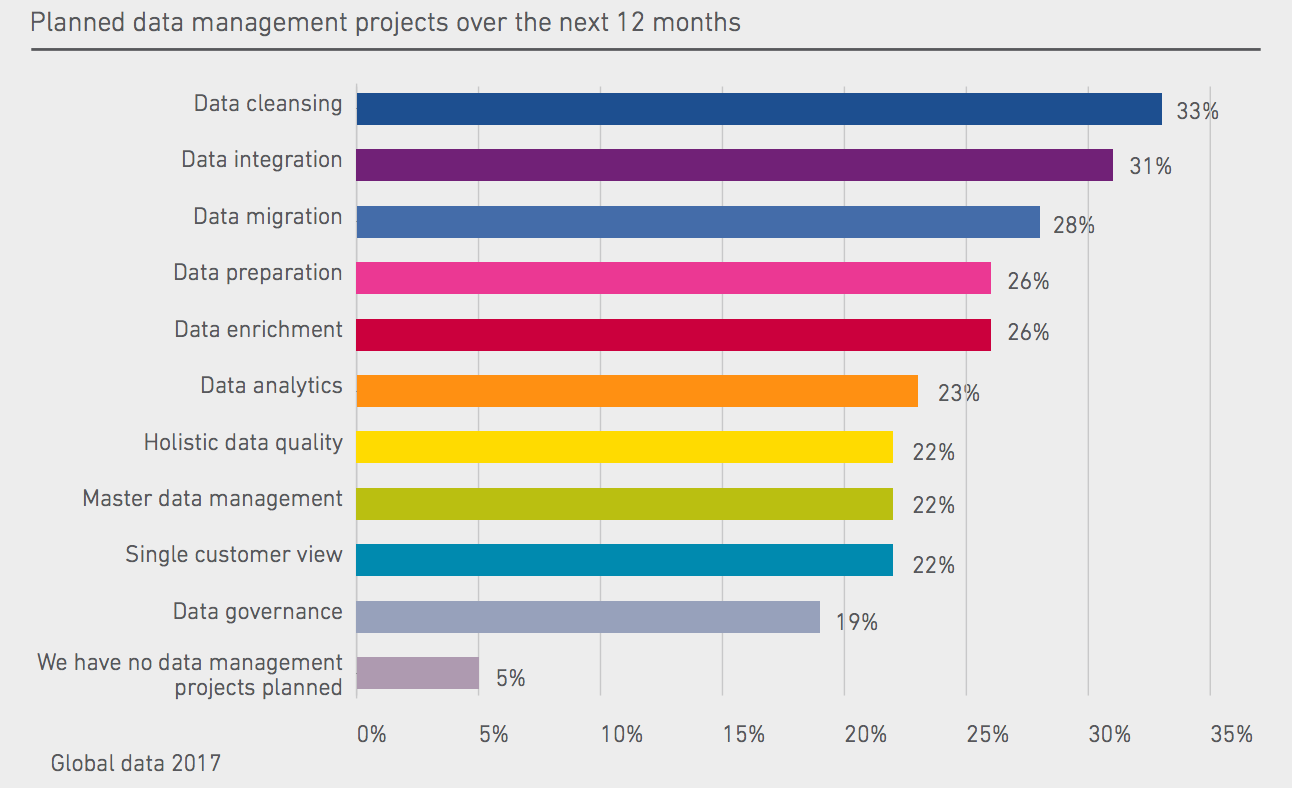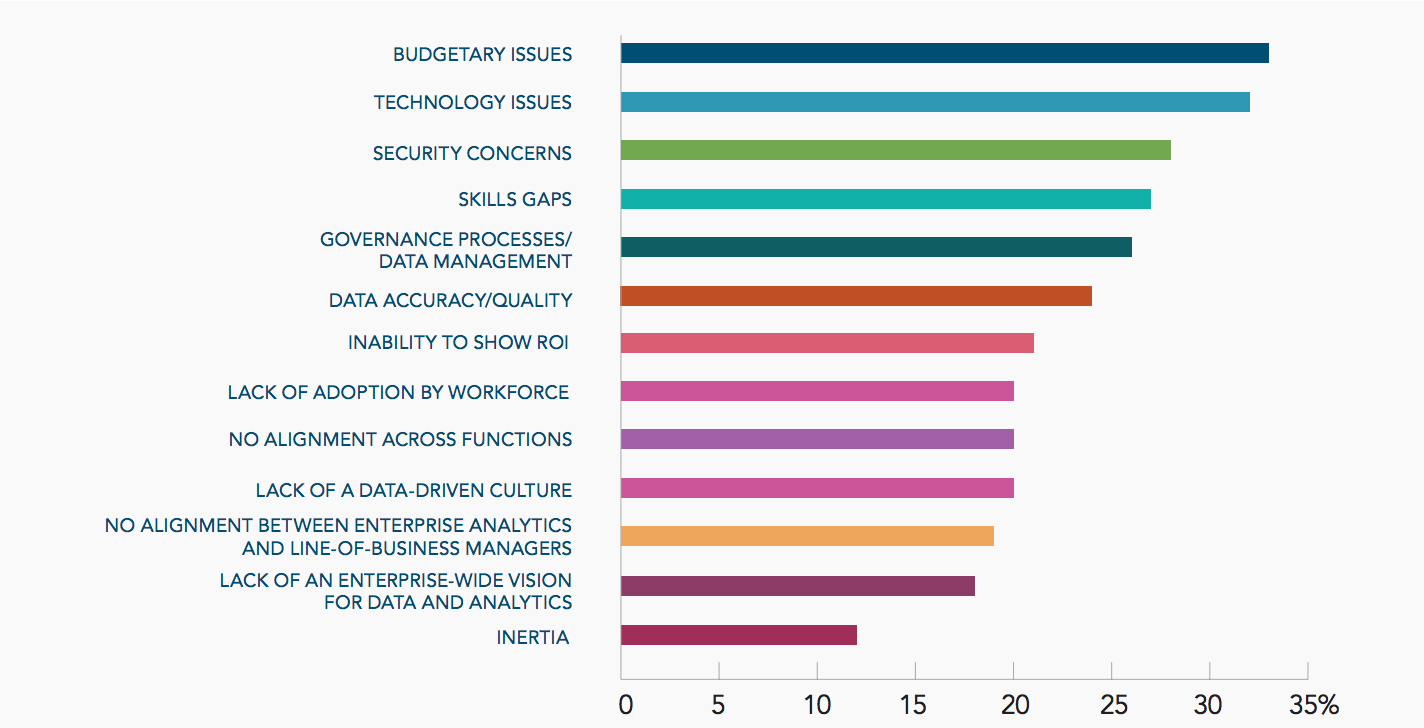
For all the talk of data analytics, organizations are still struggling to use it effectively.
That’s the picture painted by two recent studies, which confirm data alone doesn’t create a data-driven organization. Organizations today remain data rich and insight poor.
More Data Than Insights
The studies — one by Forbes Insights and Dun & Bradstreet and a second by Experian Data Quality — show wide gaps between the promise and use of data analytics.
Marketers can develop highly targeted campaigns and promotions from data generated by websites, apps and the Internet of Things.
But few are aggressively using such insights, studies show. In fact, organizations have long ways to go to optimize the use of the data their teams are consuming and analyzing.
What’s more, many organizations still don’t trust data enough to use it to make decisions. Rather, they need to engineer wholesale cultural changes to drive adoption and use of advanced analytics.
Data analytics are tools that measure and interpret collected information and work in sync with, or as part of, other platforms in the digital marketing ecosystem.
For marketers, data analytics provide insight into the effectiveness of their campaigns, guide their management and operations decisions, and empower them to scale a personalized, real-time marketing experience to millions of people.
Marketers can harness the power of data analytics to deliver measurable, value-added results.
Guesses, Gut Feelings Trump Data
According to the Experian Data Quality report, 97 percent of organizations use data to power business opportunities. But only 44 percent trust that data enough to use it to make important business decisions.
More than half —52 percent — rely on educated guesses or gut feelings to make decisions based on that data.
“Businesses today recognize the importance of the data they hold, but a general lack of trust in the quality of their data prevents them from achieving strategic business objectives,” the report concluded.
Experian Data Quality, a subsidiary of Experian, surveyed more than 1,400 data management professionals to understand how data is being used within organizations and assess how data quality impacts business priorities. The findings are summarized in its 2017 global data management benchmark report.
Data Management, Governance Needed
Most organizations want to use data to increase revenue and better serve customers.

But first, they need to establish a foundational level of trust in the data they use.
“How do you build confidence in your data? With a strong focus on good governance and data quality,” the report notes.
High quality data will enable organizations to power more opportunities for themselves and their customers.
But organizations should think carefully about their needs before they invest in technologies such as Master Data Management (MDM), which the report calls “a huge buzzword in boardrooms around the world.”
Roger Yeh, a senior technical consultant at Experian Data Quality, said many see MDM as “this magical solution.” He continued:
“And they’re right. But that’s like saying you would hire Shaquille O’Neal just so he can help you replace light bulbs in high ceilings or clean the gutters. What many don’t consider is that MDM is often overkill for what the organization actually wants to accomplish.”

Before embarking on your data projects, Yeh said organizations should “really think” about their end goals.
At ARKE, we could not agree more. We believe the best strategy starts with the identification of the goals you want to meet — and that you need to articulate strategy before you invest in any technology.
A ‘Critical Need’ for Analytics
The Dun & Bradstreet/Forbes Insights 2017 Enterprise Analytics Study focuses on the increasingly important role analytics play in driving core enterprise business activities, from strategy to operations.
It further suggests organizations have critical needs for investment, prioritization, and implementation of analytics. In addition, corporate leadership needs to invest in the people, processes, and technologies that empower decision support and decision automation.
More than 300 senior executives in North America, Britain, and Ireland were surveyed for the study. The authors described data analytics as a “competitive differentiator,” adding more focus and investment is critical.
“Those that haven’t yet begun to prioritize implementation of advanced analytics within their organizations will be playing catch-up for a long while, and may never fully recover,” said Nipa Basu, chief analytics officer, Dun & Bradstreet.
More Data, Bigger Data Challenges
The Dun & Bradstreet/Forbes Insights draws some important conclusions, notably that “today’s data-driven enterprise has a never-ending appetite for more data.”
But it also notes data analytics skills gaps persist across the enterprise. That shows a need for better tools and best practices, the report noted.
There is surprisingly little sophistication in the ways companies analyze data. About 23 percent of those surveyed still use spreadsheets for data work. Only 41 percent use predictive models and/or advanced analytical and forecasting techniques. Only 19 percent of respondents use no analytical tools beyond basic data models and regressions.
In addition:
- 24 percent cited data quality and accuracy as major obstacles to the success of their analytics efforts. Only 42 percent said they are confident in the quality of their data.
- 27 percent said lack of knowledge hampers their data and analytics efforts. More than half (52 percent) use third-party data vendors to help them make better use of big data.
- Business leaders need to do more with all the data their teams are consuming and analyzing. The C-Suite and senior leadership should do more to drive the cultural change needed for better use of analytics.
But data and analytics remain promising areas of opportunity, the study found. Survey respondents said these areas of analytics insights will be most valuable in the next 12 months.




